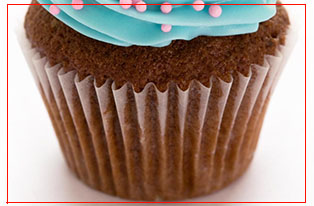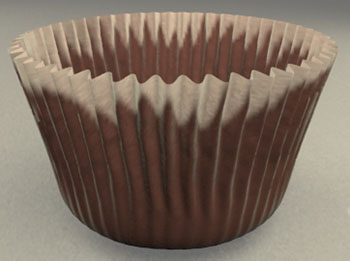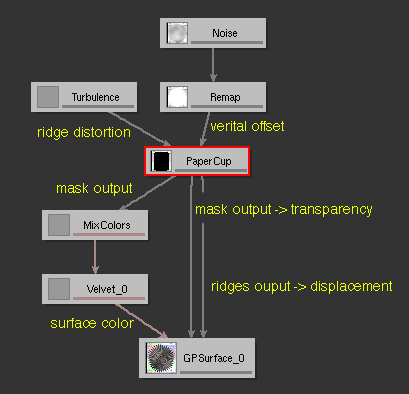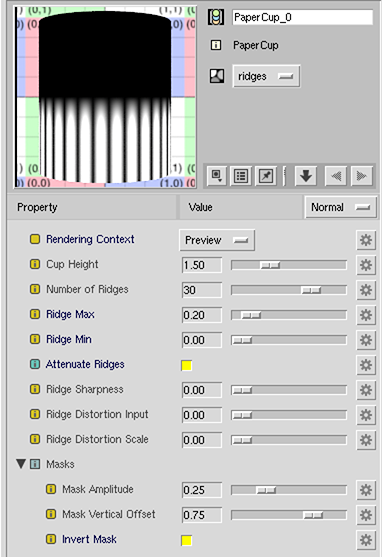Introduction
This page presents the code for a custom node that demonstrates how Slim can be used to apply both "shape" (aka displacements) and "shading" to simple geometry in order to achieve a "look" that would be tedious to achieve using geometric modelling or displacement mapping techniques.
A Cupcake Liner
The look to be achieved is shown in the following reference image. Cupcake liners are generally made of thin paper or "metal" foil. Both materials have about 30 ridges that are more-or-less sinusoidal, with a depth that diminishes to almost zero at the base. The ridges have varying degrees of distortion.

Figure 1
The geometry for a liner and its resulting "look" when shaded with the
custom node and GPSurface are shown in figures 2 and 3.



